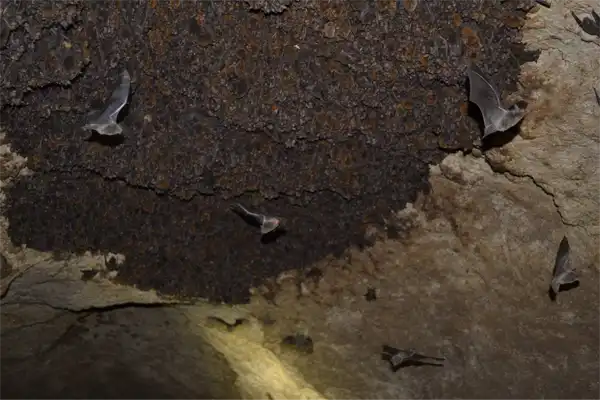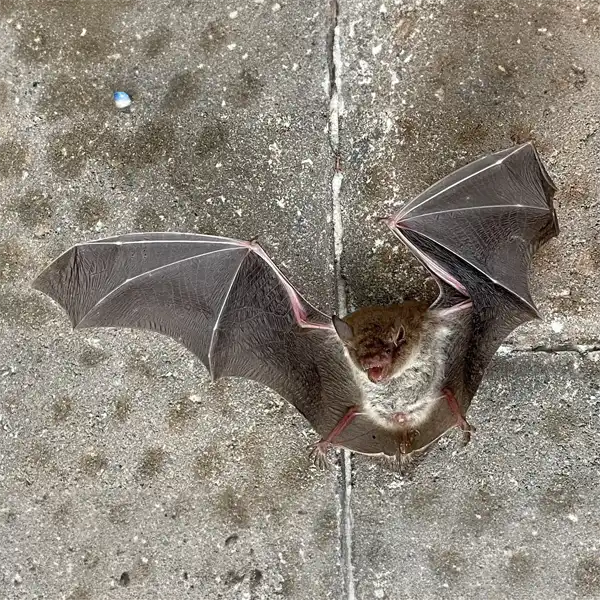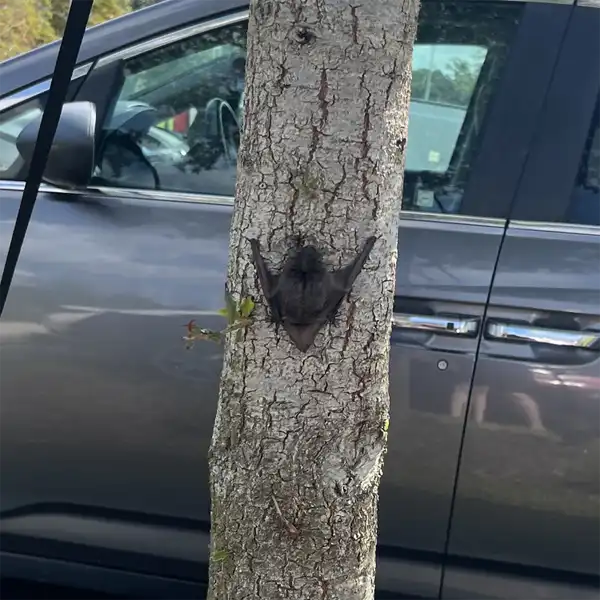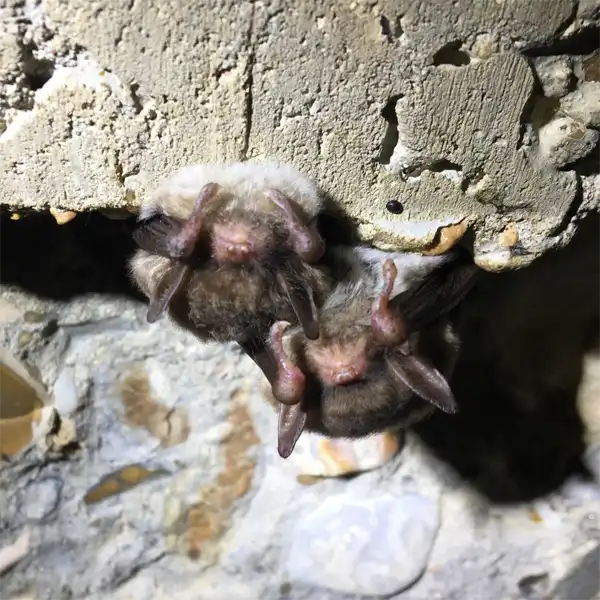Southeastern Myotis
- Scientific Name
- Myotis austroriparius
- Also Known As
- Mississippi Myotis, Southeastern Bat
- Range
- Central and Northern Florida
- Diet
- Mossquitos, Mayflies, Caddisflies, Beetles, Moths
- Life Expectancy
- 5 - 6 Years
Quick Links
Brown Rats in Central Florida
The southeastern myotis (Myotis austroriparius) is a small insectivorous bat native to the southeastern United States. As a year-round resident of central Florida, populations of M. austroriparius thrive in the warm, humid climate. This article provides detailed biological facts, behavior, habitat preferences, and conservation status for the southeastern myotis in central Florida.
Appearance and Identification
Southeastern myotis bats can be identified by the following physical characteristics
The southeastern myotis is one of Florida’s smaller bat species, with pointed tragus and keeled calcar distinguishing it from similar looking evening bats (Nycticeius humeralis) and eastern pipistrelle bats (Perimyotis subflavus).
Maturation Rate
Newborn pups weigh only 1 to 2 grams. They grow rapidly, reaching adult size by 21 days old. Sexual maturity is attained at 6 to 12 months of age. The southeastern myotis has one breeding season annually in Florida.
Habits and Behavior
The southeastern myotis is nocturnal, resting in hollow trees and Spanish moss during the day. At night, it emerges to forage primarily over water sources like ponds, streams, and wetlands. This species flies slowly and erratically, catching insects in flight or gleaning them from vegetation.
M. austroriparius uses echolocation to navigate and hunt prey. It produces broadband frequency sweeps from 80 to 40 kHz. calls are steep and rapid, at a repetition rate of 18 calls per second. The southeastern myotis roosts in colonies ranging from a dozen to hundreds of individuals.
Reproduction and Lifespan
In central Florida, breeding occurs in autumn. Females give birth to a single pup from April to June. The gestation period is 50 to 60 days, with lactation lasting 3 to 5 weeks. Young southeastern myotis pups are volant by 3 weeks old. Lifespans in the wild average 5 to 6 years.
Ideal Habitat and Range
The subtropical climate of central Florida provides ideal habitat for the southeastern myotis. Mild winters with average lows around 60°F allow year-round residence. Dense vegetation near freshwater wetlands offers daytime roosting sites and insect-rich foraging areas. Common roosts include:
- Palmetto fronds and Spanish moss
- Cavities in cypress knees
- Holes in trees like laurel oak and cabbage palm
- Bat houses near water
Wetlands and floodplain forests harbor abundant flying insect prey like mosquitoes, mayflies, beetles, and moths. Central Florida’s many lakes, streams, and swamps provide prime foraging habitat.
Diet and Feeding
As an insectivore, the southeastern myotis consumes a variety of small flying insects. Major prey includes:
- Aquatic insects – mosquitoes, mayflies, caddisflies
- Beetles – scarabs, longhorn beetles
- Moths – pyralids, noctuids
- Other insects – lacewings, flying ants, true bugs
The southeastern myotis emerges at dusk to forage, primarily over water. It uses echolocation to detect and catch insects on the wing. This species also gleans resting insects from vegetation. Nightly consumption averages 3 to 5 grams of insects (30% to 100% of body mass).

Photo 6306095 © Katelin Cross, CC BY-NC

Common Health Risks
While beneficial insectivores, bats may harbor pathogens transmittable to humans:
- Rabies virus – Spread by infected saliva from bites. Nearly always fatal once symptoms manifest. Prophylactic treatment recommended for bat bites.
- Histoplasmosis – Caused by fungal spores from accumulated bat guano. Causes flu-like respiratory illness if inhaled. Guano deposits should only be handled while wearing protective gear.
However, the risk of contracting these diseases from southeastern myotis is extremely low given its small size and non-aggressive behavior. Roosts and colonies should not be approached or handled without proper protective equipment as a general precaution. Exclusion by bat specialists is recommended if roosts are in inhabited structures.
Preventing Human-Bat Conflicts
To prevent unwanted interactions, some tips include:
- Seal potential roost entry points into inhabited structures using steel mesh, caulk, foam, or mortar
- Install bat houses at least 15 feet from buildings to provide alternative roosts
- Do not attempt to handle bats directly
- Seek professional removal if bats are roosting inside living quarters
- When cleaning guano accumulations, follow CDC precautions – wear gloves, mask, protect eyes and skin
Southeastern Myotis in Central Florida – Conclusion
In summary, the southeastern myotis is a small insect-eating bat well adapted to central Florida’s warm climate. It plays an important role in controlling pest insect populations. While bats should be excluded from human dwellings, this mostly solitary species poses little direct risk to humans. Conserving bat roosting and foraging habitat helps maintain southeastern myotis populations while preventing unwanted encounters. With informed coexistence practices, bats and humans can reside compatibly in central Florida’s sub-tropical environment.







